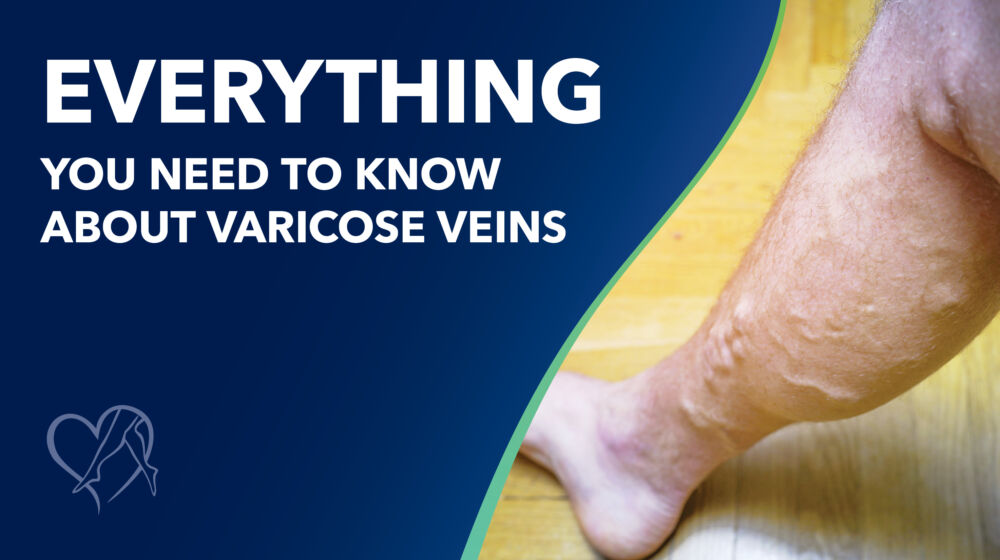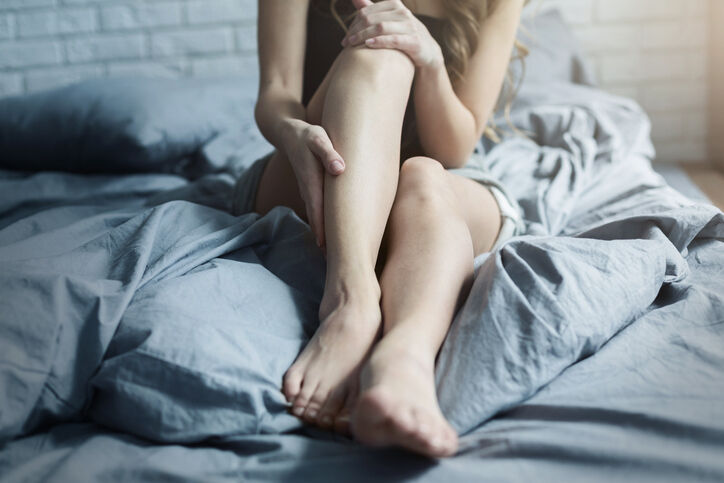Both restless leg syndrome and vein disease can disrupt sleep. So are the two conditions connected? Here’s the rundown.
A good night’s sleep is vital for a person’s well-being. But for people who suffer from restless leg syndrome (RLS), falling and staying asleep is almost an impossible task. RLS causes them to experience unpleasant sensations of itching, twitching, pulling, and crawling that can only be relieved by leg movements. Such disruption in sleep means they wake up tired, disoriented, or even depressed.
The National Institute of Neurological Disorders and Stroke estimates that RLS affects roughly 10 percent of the U.S. population. Those with RLS tend to delay treatment, believing it’s not a severe medical condition. Yet RLS can severely disrupt a person’s quality of life. With the right therapy and lifestyle changes, a person can finally get a restful and refreshing sleep every night. The first step in alleviating RLS symptoms involves diagnosing the underlying cause, which is commonly linked to vein disease.
What is RLS?
Restless leg syndrome has been attributed to several causes, including some neurological ones. The prevailing theory is an imbalance of the brain chemical dopamine that regulates muscle movement. For that reason, Parkinson’s Disease patients exhibit a high incidence of RLS.
RLS has also been linked to iron deficiency, kidney disease, and peripheral neuropathy caused by diabetes. RLS appears to run in families, as well.
Certain medications to treat depression and nausea, as well as antipsychotic drugs and antihistamines, can also cause RLS symptoms. Although caffeine, nicotine, and alcohol may not cause RLS, those substances can worsen the symptoms.
RLS symptoms don’t always occur when first slipping into bed. The sensations can also develop after a person has been seated for an extended period, such as on a long car or plane ride or while watching a movie.
A doctor will review a detailed list of symptoms and when they tend to occur to diagnose RLS. The most pronounced sign is an uncontrollable impulse to move the legs. The symptoms worsen at night and are relieved temporarily by moving the legs.
A blood test or neurological exam may also be performed. One possible (and expected) cause of RLS that shouldn’t be overlooked is chronic vein disease (CVD) and varicose veins.
The link between CVD and RLS
Chronic vein disease stems from poor circulation, particularly in the legs. Inside your leg veins are tiny valves that struggle against gravity to pump back to the heart. When the valves weaken and allow blood to backflow and pool in the vein, the vein walls stretch and become visible under the skin's surface. Although varicose veins are one sign of CVD (which will be discussed later), other symptoms may also develop, such as leg swelling, cramping, pain, skin changes, and ulcers. If CVD develops within veins deeper within the leg, varicose veins may not necessarily appear visible even though symptoms can be felt. The bottom line is that each person may experience CVD differently.
Deep vein thrombosis (DVT) is another possible (and dangerous) consequence of CVD. As blood movement slows in the veins, blood cells may clump together and form a clot. If the clot travels to the lung, it could cause a potentially life-threatening pulmonary embolism (PE). DVT symptoms range from swelling, warm skin, pain or throbbing in the leg, and reddish or darkened skin.
So what’s the connection between RLS and CVD? Both conditions have similar symptoms. Cramping in the legs is a hallmark of CVD and RLS. CVD symptoms intensify later in the day or at night and are sometimes relieved briefly by leg movement. CVD cannot be ruled out for those experiencing RLS.
The link between varicose veins and RLS
As mentioned earlier, CVD is the root cause of varicose veins.
In addition to the swelling, varicose veins cause pain, throbbing, cramping, itching, and other symptoms similar to RLS. Like RLS, varicose vein symptoms tend to worsen by the end of the day, possibly interfering with sleep.
Scientific studies have documented a connection between RLS and varicose veins. A 2007 study evaluated patients for both RLS and chronic vein disease. Of a group of 174, 36% showed RLS symptoms. Upon further examination, 98% of the RLS patients were diagnosed with CVD by ultrasound. The results indicate that “RLS appears to be a common overlapping clinical syndrome in patients with CVD,” the study noted.
Other studies have suggested a link between the sleep disorder and varicose veins. In those studies, the connection was verified by a reduction of RLS symptoms. A 2008 study published in Phlebology: The Journal of Venous Disease reviewed 35 patients with both moderate to severe RLS and superficial vein insufficiency (SVI), or varicose veins. A subset of the group underwent ultrasound-guided sclerotherapy for varicose veins and reported a marked improvement in RLS symptoms.
A larger 1998 study screened more than 1,300 patients for RLS and saphenous vein disease, as confirmed by Doppler ultrasound. It further established a link between RLS and vein disease. Following sclerotherapy treatment, 98 percent of 113 RLS patients reported relief from the sleep disorder’s effects. These findings led researchers to conclude that RLS is common among patients with vein disease. RLS patients, therefore, should be evaluated for vein disease before drug therapy for RLS.
Treating RLS with medication
The FDA has approved one anti-seizure medication, gabapentin enacarbil, to treat RLS. It works by blocking nerve signals in the legs. RLS can also be treated with medications to increase the level of dopamine in the brain. These dopamine agonists include FDA-approved drugs Rotigotine (Neupro) and pramipexole (Mirapex). Drugs that affect calcium channels have also minimized RLS symptoms in some patients. Iron supplements may improve symptoms if the RLS is due to iron deficiency.
Muscle relaxants and sleep medications may help RLS patients sleep better but will not reduce twitching and other uncontrolled leg movements.
Treating RLS without medication
Note that medication isn’t the only treatment for RLS. Non-drug therapies and at-home remedies can also relieve RLS symptoms, such as:
Exercise. Regular exercise during the day relaxes muscles, reduces RLS symptoms, and tires out RLS patients enough so they’ll slip into sleep more easily. However, intense workouts just before bedtime may keep patients awake.
Take a warm bath. Soaking in a warm tub helps relax muscles. A gentle massage also works.
Avoid caffeine. Caffeine works as a stimulant and can worsen RLS symptoms, making it harder to fall asleep. Patients should avoid coffee, tea, or any drink with caffeine before bedtime.
Apply hot and cold compresses. Alternating between hot and cold packs may minimize unpleasant limb sensations.
Practice good sleep habits. RLS can disrupt sleep patterns. Yet RLS patients can counteract that by practicing good sleep habits. Create a quiet, comfortable place conducive to sleeping. Patients should also try to wake up and go to bed at the same time each night to establish a routine.
Wear a foot wrap or vibrating pad. RLS patients have found relief when wearing a foot wrap designed specifically for the condition. The wrap puts pressure on the foot to relieve unpleasant sensations. A vibrating pad placed at the back of the knee can also ease symptoms.
Boost magnesium intake. Magnesium plays a vital role in sleep regulation by balancing the amount of calcium in cells. Too much calcium in the cells can cause muscle twitching and other symptoms of RLS. But while magnesium may relieve RLS symptoms, it’s ineffective in treating venous disease. Only surgical procedures aimed at treating the damaged veins can eliminate vein disease.
Treat your RLS by treating your vein disease
Because RLS and varicose veins are so closely linked, getting checked for vein disease is imperative if you’re experiencing RLS. A vein specialist can perform a physical assessment and an ultrasound exam to diagnose vein disease.
Nonsurgical approaches and lifestyle changes to treat vein disease range from exercising to wearing compression stockings. Walking and biking can engage the calf muscles, so they help push blood through the leg veins. Compression stockings apply gentle, graduated pressure on the leg veins, promoting smoother blood flow. While these methods effectively reduce symptoms, they cannot cure varicose veins. To eliminate varicose veins, you must look for surgical procedures that remove or destroy the affected vein. The methods described below are all minimally invasive and can be performed as outpatient procedures that take no more than an hour.
Sclerotherapy. Your doctor will inject a sclerosing agent into the vein, irritating the vein walls, so the vein eventually collapses.
Thermal ablation. Thermal ablation comes in two forms: radiofrequency ablation and laser ablation. A catheter will pulse heat from radiofrequency waves or a laser to destroy the diseased vein, which is then reabsorbed into the body.
Ambulatory phlebectomy. During ambulatory phlebectomy, the doctor will remove the swollen vein via two tiny incisions.
VenaSeal. A relative newcomer in vein treatment, VenaSeal involves using a medical-grade adhesive to seal the diseased vein.
ClariVein. During ClariVein, the doctor will inject a sclerosing agent into the vein while rotating a mechanical device to destroy the vein.
Because these procedures are minimally invasive, they require little to no anesthesia. Patients recover quickly and can return to their routine with few restrictions. Afterward, patients will find relief from the pain and swelling of varicose veins. They may sleep better, too.
Get a good night’s sleep with vein treatment
Ready to get better sleep? Control your restless leg syndrome by addressing the root cause of it. Center for Vein Restoration physicians have helped diagnose varicose veins for countless patients and can also walk you through a customized treatment plan.
Contact one of our offices today for a consultation, or call us to speak to a dedicated Patient Services Representative. You can also easily schedule online.
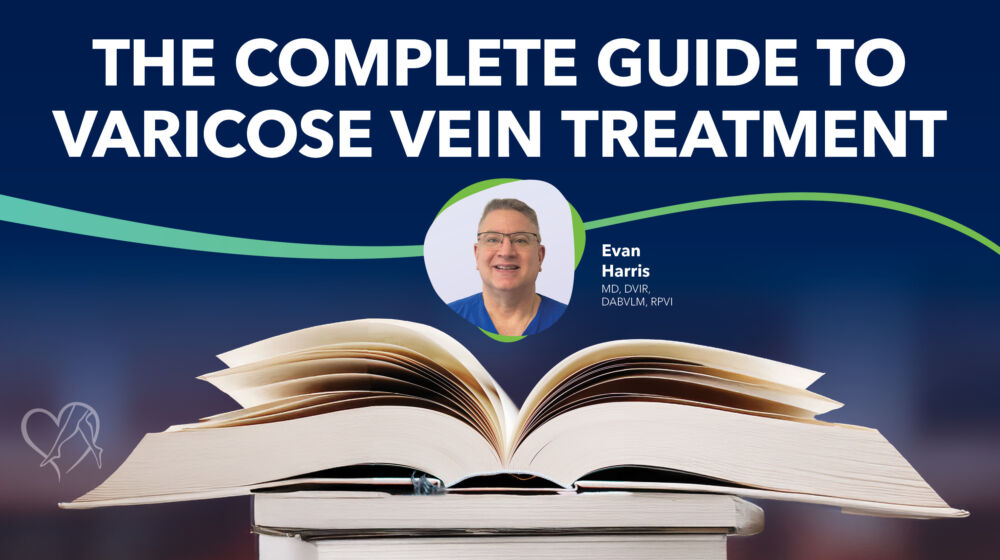
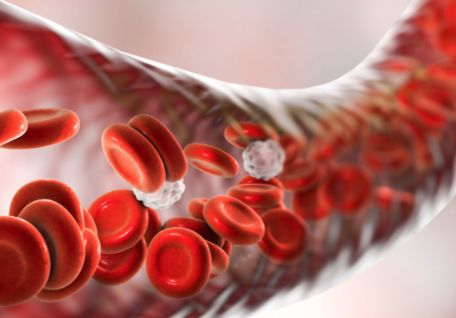 About Vein Disease
About Vein Disease
 Spider Veins
Spider Veins
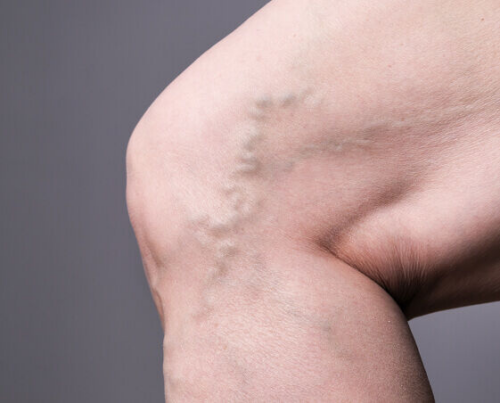 Varicose Veins
Varicose Veins
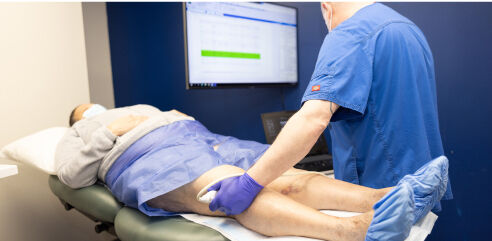 Vein Disease Treatments
Vein Disease Treatments
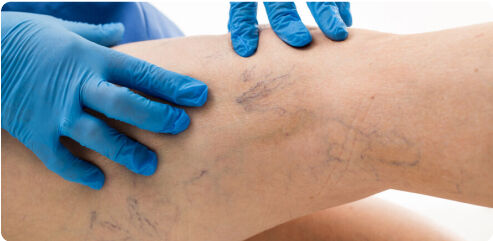 Treating Spider Veins
Treating Spider Veins
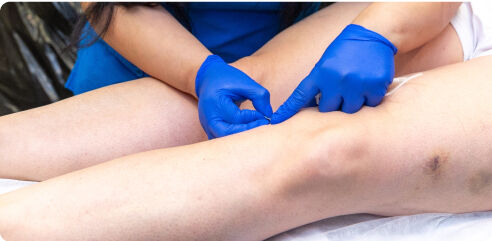 Treating Varicose Veins
Treating Varicose Veins
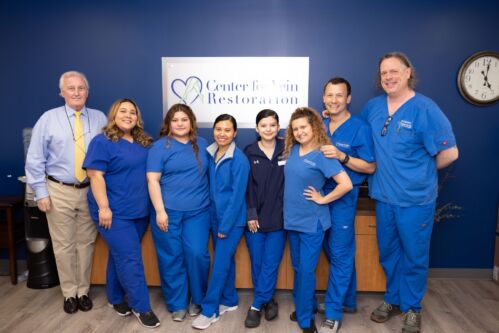 About Us
About Us
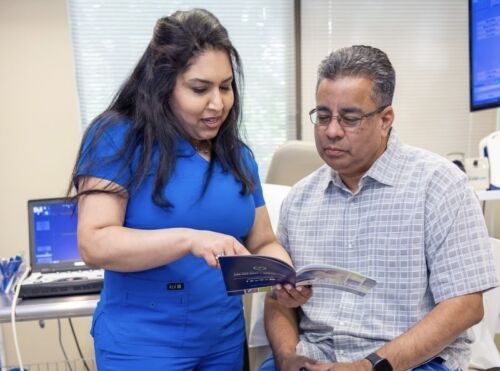 Patient Resources
Patient Resources
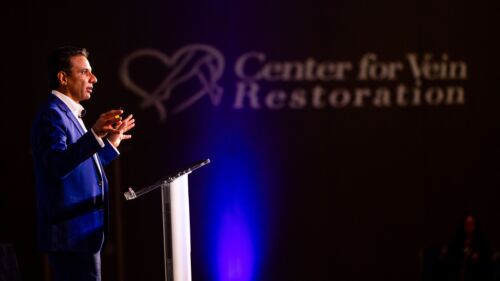 Physician Resources
Physician Resources

